Have you ever been inspired by a piece of art, whether it's a song, a play, a poetry, a book or a drawing? When it happens, we are transferred as we are touched; we are taken to a new location that is still deeply embedded in a tangible experience, in our bodies. That had happened to me, when I was in fourth grade and my grandmother brought a calendar that depicted the art works of famous Russian painter, Ivan Ivanovich Shishkin (Jan 25, 1832 - Mar 20, 1898).
I was inspired particularly by one of his works “Rain in an Oak Forest”. I could not believe my eyes how realistic it was and how Shishkin was able to depict, with complete honesty, the beauty and emotion found within the Russian countryside, despite of his difficult life he had.

“Rain in an Oak Forest”, Ivan Shishkin, 1891, Oil on canvas.
Born in post-soviet Turkmenistan, we have been learning in schools not only the world history but also attending the Art school we were acquainted not only with the Russian artists but also with the entire spectrum of art throughout the world. However, little is known about the art movements, Russian painters and how Russian art of different time was related to art in other countries. If you want to learn more about how the Russian art connection and relations with the art of other countries, I highly suggest to read the book by Rosalind P. Blakesley “The Russian Canvas: Painting in Imperial Russia” that is available in English language.
The extraordinary growth of Russian art in the 18th and 19th centuries, and the extent of its relationships with other European and other parts of the world is fascinating that the artists deserve special recognition for their work, that some can be singled out as innovators and leaders of new movements in the Russian art. Particularly, I am excited to share a few great artists and their works that I found the connections between art movements that were happening both in Europe and the United States such as Romanticism, Realism and Orientalism.
When it comes to the transitioning from the Russian Neoclassicism to Romanticism movements, Karl Bryullov played a critical role in this transition. Bryullov was born into an artistic family and, like his siblings, attended the Academy of Arts, where his father was a tutor. When he completed his studies, the young artist was awarded a scholarship to go to Europe. He adored Italy, where he finished one of his masterpieces that brought him fame, The Last Day of Pompeii.
Bryullov used two separate sources of light in “The Last Day of Pompeii”. One of them is the dramatic red light from the volcano and the cool greenish light from the horizon, which brings much an emotional tension to the painting. The vibrant and rich colors often transcend the classical style, prompting others to label Bryullov as a romanticism artist.
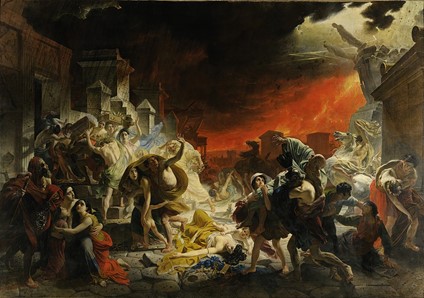
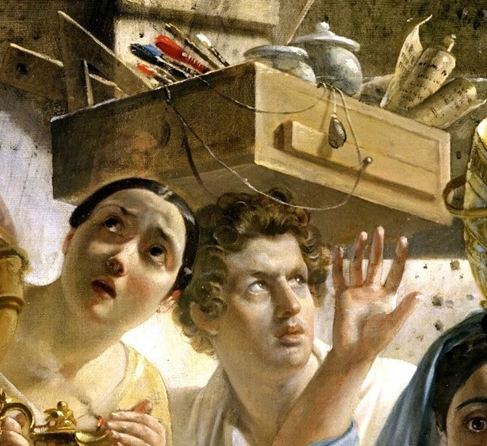
Karl Bryullov, The Last Day of Pompeii, 1830-33
Ivan Konstantinovich Aivazovsky is a famous Russian marine painter, author of more than six thousand canvases. He was also a professor, academician, philanthropist, honorary member of the Art Academies of St. Petersburg, Amsterdam, Rome, Stuttgart, Paris and Florence.
After his studies at Saint Petersburg's Imperial Academy of Arts, Aivazovsky briefly travelled to Europe, Italy in the early 1840s. Upon returning to Russia and he was appointed as the Russian Navy's chief painter. Aivazovsky had strong relations with the Russian Empire's military and political elite, and he often attended military operations. Throughout his life, Aivazovsky was adored, well-known outside of Russia and even sponsored by the state.
There is even a phrase that was popularized by famous Russian writer, Anton Chekhov that is now widely used by local people as “worthy of Aivazovsky’s brush” to describe something beautiful. In addition, in Europe and the United States, he had a number of solo exhibits. Over his nearly 60-year career, he produced about 6,000 paintings, making him one of the most prolific artists of his generation.
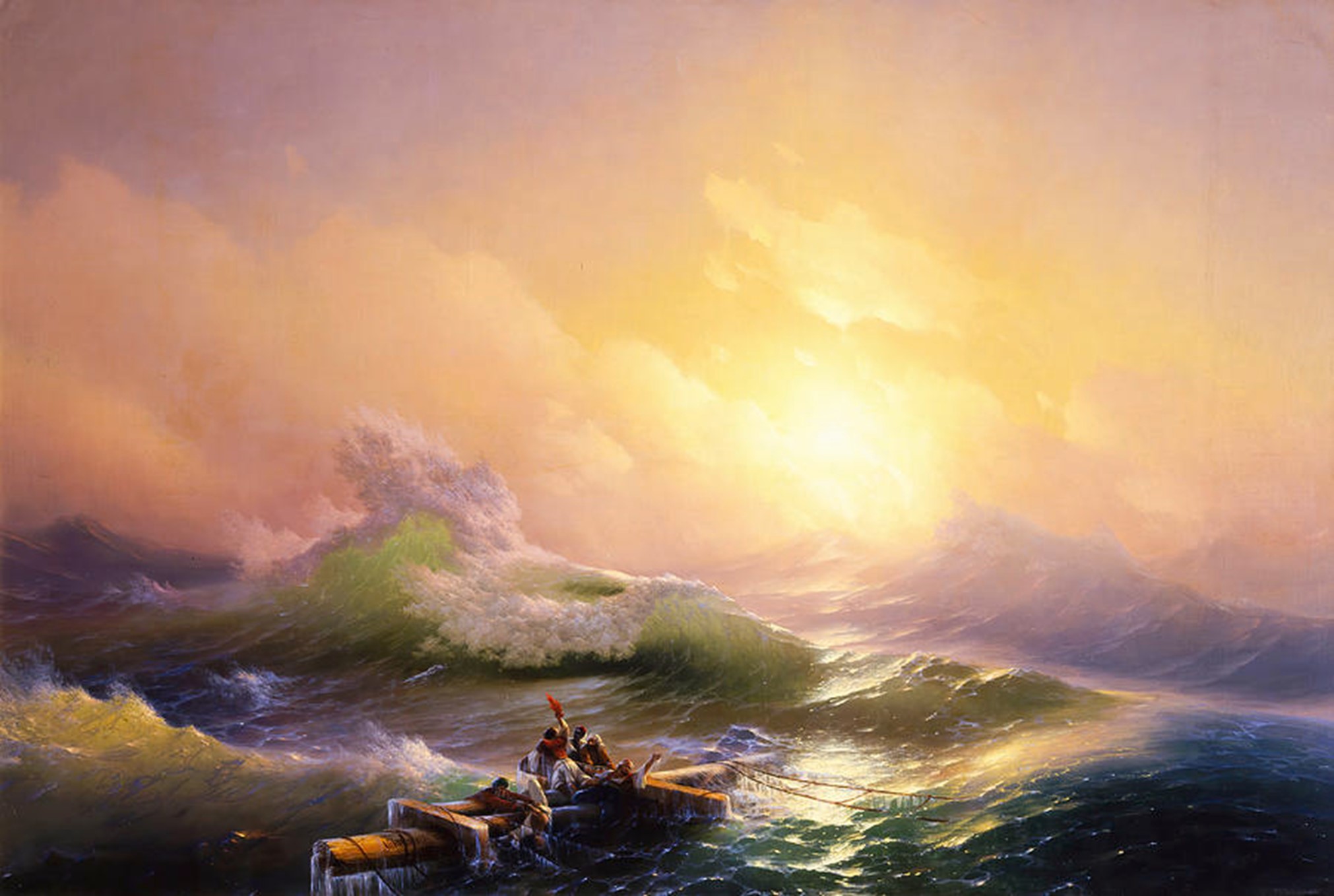
Ivan Aivazovsky, The Ninth Wave, 1850
Russia has given the world many talented painters, but no one can compare with Vasily Vasilyevich Vereshchagin in his ability to depict battle scenes and to realistically convey the very spirit of the battle or its consequences.
During the 19th century, Vereshchagin used his artwork to criticize Imperial Russia's hostile moves toward its eastern and southern neighbors. He traveled half of the world's continents and fought in two battles. He did not ride for leisure, but rather spent the remainder of his career drawing war scenes, all of which were so gruesome that the public rejected them.
Vereshchagin remained in Munich and Paris for over ten years, with long trips to New York, Tokyo, and Istanbul. He was famous not only in Russia, but in Europe, and is regarded as one in the greatest master painters of the Orientalism movement. Orientalism – is a term used to explain how Europeans represented unexplored areas in eastern or Islamic regions.

Vasily Vereshchagin, The Apotheosis of War, 1871
Galina Hasanova
“Once you ‘got’ Pop, you could never see a sign the same way again. And once you thought Pop, you could never see America the same way again.” -Andy Warhol
The Pop Art movement emerged during the mid-to-late 1950s, in predominantly the United States and the United Kingdom. This movement had many prominent artists that we can still see in our media today, such as Andy Warhol and Claes Oldenburg. Both artists utilize common and recognizable images with a spin, changing the viewer’s perspective on a previously familiar image!
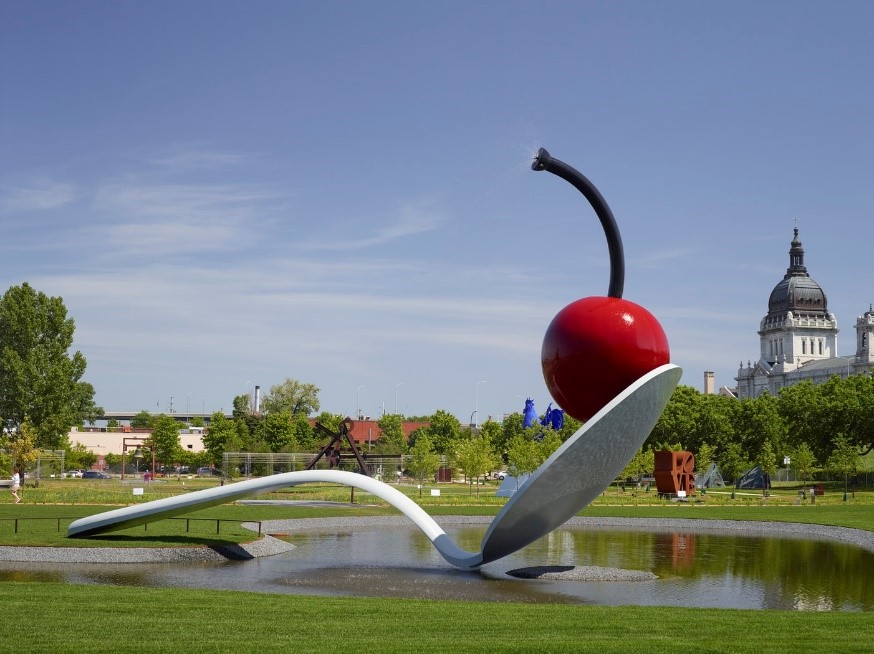
“Spoonbridge and Cherry”, Stainless steel and aluminum, 1988, Claes Oldenburg
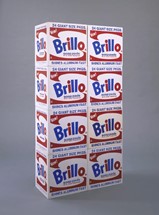
“Brillo Box (Soap Pads)”, Synthetic polymer paint and silkscreen ink on wood, 1964, Andy Warhol
Pop art followed behind on the popularity high of Abstract Expressionism but in difference, Pop Art used recognizable imagery, often images from popular media at the time such as: celebrities, mass-produced images and products, and comic books. Pop art was very much intertwined with the criticism and expansion on the ideals and messages of mass media at the time, and many pop artists reproduce these images with the intent to change the viewer’s perspective on the once familiar imagery!
Pop art emerged in the states in mid-late 1950s and intended to remove the line between “high” and “low” art. They wanted to emphasize that all art is worthwhile rather than just what is considered more “refined” and of higher status. Pop art used a lot of bright colors and, often, commercial image production methods such as silk-screening and making multiples of each piece. This went along with some of the motivation behind pop art, as they often used popular media from the time, like celebrities, comic book art, and other commercial images to highlight the effects of and criticize mass media. One of the most prominent artists from this movement was Andy Warhol, who created iconic images such as the “Campbell’s Soup Cans” and the “Shot Marilyns”.
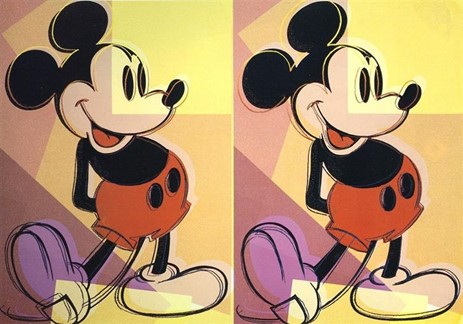
“Mickey Mouse”, Screen print, 1981, Andy Warhol
Victoria Vega